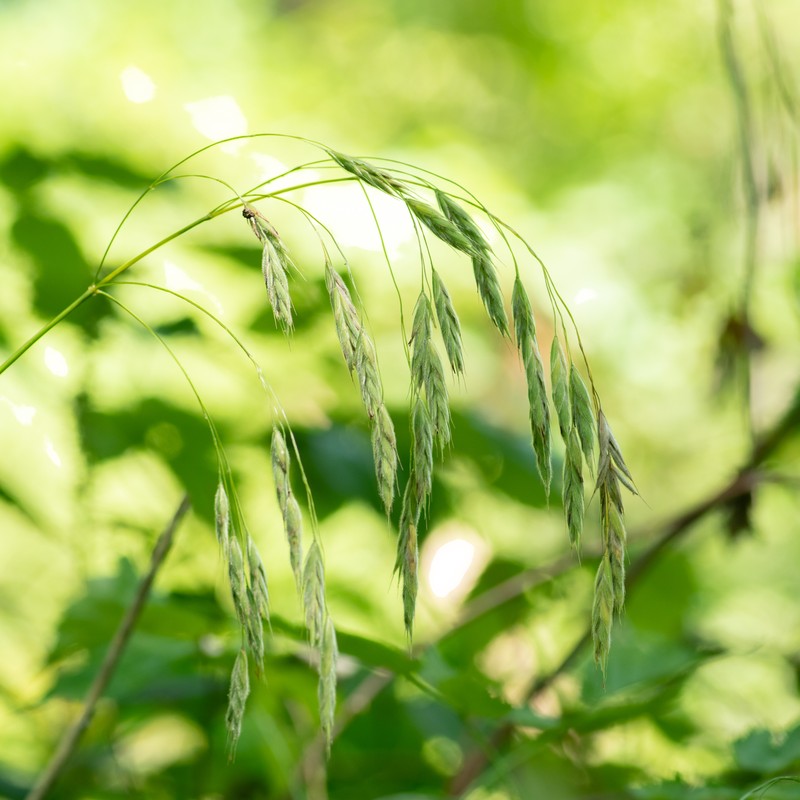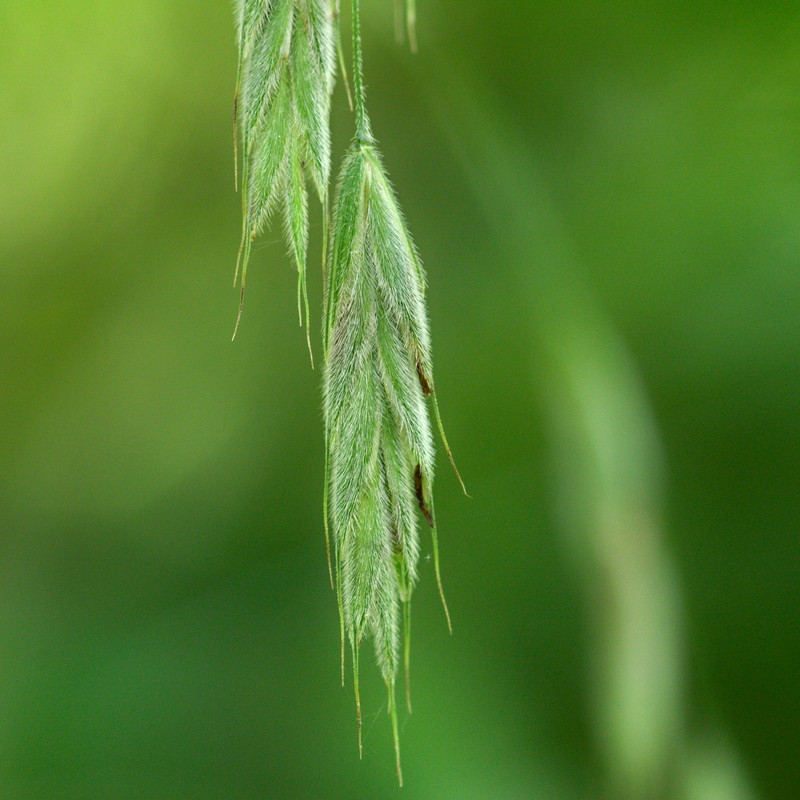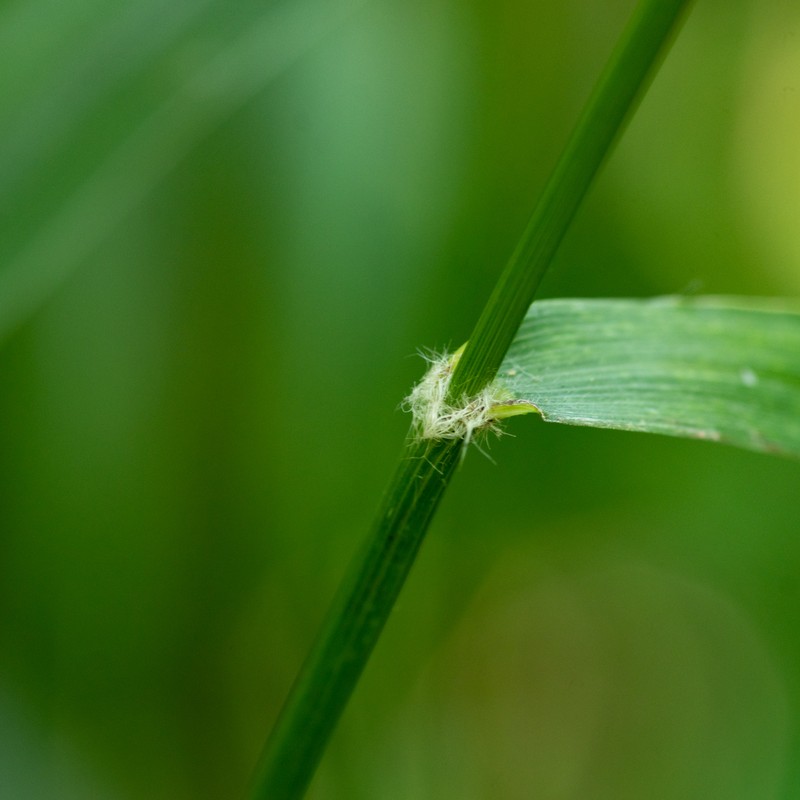Satin Brome
Bromus nottowayanus Fern.
- Class
- Monocotyledoneae (Monocots)
- Family
- Poaceae (Grass Family)
- State Protection
- Endangered
Listed as Endangered by New York State: in imminent danger of extirpation in New York. For animals, taking, importation, transportation, or possession is prohibited, except under license or permit. For plants, removal or damage without the consent of the landowner is prohibited.
- Federal Protection
- Not Listed
- State Conservation Status Rank
- S1S2
Critically Imperiled or Imperiled in New York - Especially or very vulnerable to disappearing from New York due to rarity or other factors; typically 20 or fewer populations or locations in New York, very few individuals, very restricted range, few remaining acres (or miles of stream), and/or steep declines. More information is needed to assign either S1 or S2.
- Global Conservation Status Rank
- G4G5
Apparently or Demonstrably Secure globally - Uncommon to common in the world, but not rare; usually widespread, but may be rare in some parts of its range; possibly some cause for long-term concern due to declines or other factors. More information is needed to assign either G4 or G5.
Summary
Did you know?
This species was named for the river valley it was once thought endemic to, the botanist describing the species as “not away from the Nottoway River” (Fernald 1941).
State Ranking Justification
There are 7 known populations in the state and only two of them consist of more than 100 individuals. Most populations are on protected lands, but all face threats similar to those threatening floodplain forests. The largest known population is directly threatened by several highly invasive plant species.
Short-term Trends
More survey work and time are needed to determine its distribution and short-term trends in the state. Bromus nottowayanus has only recently been recognized by field botanists in NY and was first found by David Werier in 2004 (Werier 2008). Most new populations in NY have been recent discoveries from 2019-2022 (NHP 2022). Though populations continue to be found, its preferred habitat, rich floodplain forests, have declined statewide. It's possible that populations not known prior to its recognition by field botanists have been lost due to the decline of these floodplain forests.
Long-term Trends
Since this species is a recent addition to the state flora its long-term trends are unknown. More time and data are needed to determine the long-term trends.
Conservation and Management
Threats
Primary threats to this species are development of habitat for recreational use and invasive species (particularly Microstegium vimineum, Reynoutria japonica, Phragmites australis, Ampelopsis glandulosa, and Ligustrum obtusifolium). Satin brome is primarily found in rich floodplain forests, making it susceptible to many of the same threats facing that community, including conversion of habitat to agriculture, logging, and changes in the hydrology of the associated stream or river.
Conservation Strategies and Management Practices
Maintain forest cover and develop plans to remove or control invasive species impacting the sites. Limit any development in and around populations, particularly small ones. Prevent logging in and around populations, as this species seems to need partial to full canopy cover.
Research Needs
Today most regional floras available do not include B. nottowayanus (Fernald 1970, Gleason and Cronquist 1993, Mitchell and Tucker 1997). As a result, this species is likely overlooked, and more surveys of rich forested floodplains are needed to better define its range and abundance in New York.
Habitat
Habitat
In New York this species is primarily restricted to rich forested floodplains, or the adjoining rich woods, on small to medium sized streams (NYNHP 2022, Werier 2022, Werier 2008, Fernald 1941).
Associated Ecological Communities
- Floodplain forest
(guide)
A hardwood forest that occurs on mineral soils on low terraces of river floodplains and river deltas. These sites are characterized by their flood regime; low areas are annually flooded in spring, and high areas are flooded irregularly.
Associated Species
- Acer nigrum (black maple)
- Acer saccharum (sugar maple)
- Adiantum pedatum (maidenhair fern)
- Ampelopsis glandulosa (porcelain-berry)
- Asarum canadense (wild ginger)
- Boehmeria cylindrica (false nettle)
- Bromus latiglumis (flanged brome)
- Carya cordiformis (bitternut hickory)
- Caulophyllum giganteum (giant blue cohosh, early blue cohosh)
- Collinsonia canadensis (stoneroot, horse-balm)
- Dichanthelium clandestinum (deer-tongue rosette grass)
- Elymus hystrix
- Elymus riparius (eastern riverbank wild-rye)
- Elymus virginicus
- Fraxinus americana (white ash)
- Fraxinus pennsylvanica (green ash)
- Geranium robertianum (herb-Robert)
- Helianthus decapetalus (thin-leaved sunflower)
- Hemerocallis fulva (orange day-lily)
- Hybanthus concolor (green violet)
- Hylodesmum glutinosum (pointed-leaved tick-trefoil)
- Hylodesmum nudiflorum (naked tick-trefoil)
- Juglans nigra (black walnut)
- Laportea canadensis (wood-nettle)
- Ligustrum obtusifolium var. obtusifolium (border privet)
- Matteuccia struthiopteris
- Microstegium vimineum (Japanese stilt grass)
- Osmorhiza claytonii (bland sweet-cicely)
- Ostrya virginiana (hop hornbeam, ironwood)
- Panax quinquefolius (American ginseng)
- Parthenocissus quinquefolia (Virginia-creeper)
- Pinus strobus (white pine)
- Platanus occidentalis (eastern sycamore)
- Polymnia canadensis (leaf-cup)
- Populus deltoides
- Quercus alba (white oak)
- Quercus rubra (northern red oak)
- Reynoutria japonica
- Rosa multiflora (multiflora rose)
- Rudbeckia laciniata
- Solidago caesia
- Solidago gigantea (swamp goldenrod)
- Thalictrum dioicum (early meadow-rue)
- Tilia americana
- Ulmus americana (American elm)
- Viburnum plicatum (Japanese snowball)
- Vinca minor (common periwinkle, myrtle)
- Viola canadensis
- Viola sororia (common blue violet)
- Viola striata (striped violet, pale violet)
Range
New York State Distribution
This species has a wide, but disjunct, distribution across New York State and is known from extant and historical records in Albany, Broome, Erie, Tompkins, and Washington counties.
Global Distribution
Its range includes from New York south to Georgia (absent in Delaware and South Carolina); west through Tennessee, Alabama, Kansas, Arkansas, and Oklahoma; and from Arkansas northwest through Missouri, Iowa, Illinois, Indiana, Ohio, Michigan, southern Ontario, and Quebec. Also reported from Texas (NatureServe 2022).
Identification Comments
General Description
Satin brome is a robust perennial grass, distinctive from other bromes with its satiny leaves, abundant and uniform hairs on the leaf sheath summit and lemmas, long lemma awns, and 1-veined first glume.
Identifying Characteristics
Bromus nottowayanus is a perennial cespitose grass. The leaves have a satiny sheen on the abaxial surfaces (NOTE: leaves in Bromus “flip”, so the underside is presented as the upper leaf surface in the field). The culms have 5-9 nodes. Leaf sheaths are fused almost to the summit, and sheath summits have abundant hairs >1.5mm long. The inflorescence is an open panicle with pendulous spikelets. First glumes are 1-veined, sometimes 3-veined. Backs of lemmas are uniformly covered in hairs of the same length and density, though occasionally becoming less dense near the lemma apices. Lemma awns are 5.0-8.0 mm.
This species description is based largely off Werier 2022 and Werier 2008.
Best Life Stage for Proper Identification
This species is best identified when mature spikelets are present in August.
Similar Species
Bromus nottowayanus is most similar to B. pubescens and was sometimes considered a variety of it, or not differentiated at all (Werier 2008). The two can be distinguished by B. nottowayanus having a satiny sheen to the abaxial side of the leaves, uniformly distributed hairs of the same length (ca. >1.5 mm) on the backs of the lemmas, and a consistent line of long hairs (1.5 – 3.0 mm) at the summit of the leaf sheath. In B. pubescens the leaves are not satiny abaxially, the lemma hairs are of two lengths with shorter, sparser hairs in the center and longer, denser hairs near the base and edges of the lemma, and the summit of the leaf sheaths are glabrous, or if a line of tufted hairs are present, then <1.5mm long.
B. kalmii is similar to B. nottowayanus in having dense hairs across the back of the lemma but can be quickly distinguished by the first glumes being consistently 3-veined, lemmas having shorter awns (1.5–3.5 mm) and having only 3-5 leaves per culm.
B. latiglumis is also similar to B. nottowayanus but is quickly distinguished by having many more nodes per culm (9-20) and large projecting auricles on the leaf sheath summit.
- Vegetative
- Flowering
- Fruiting
The time of year you would expect to find Satin Brome vegetative, flowering, and fruiting in New York.
Satin Brome Images
Taxonomy
Satin Brome
Bromus nottowayanus Fern.
- Kingdom Plantae
- Phylum Anthophyta
- Class Monocotyledoneae
(Monocots)
- Order Cyperales
- Family Poaceae (Grass Family)
- Order Cyperales
- Class Monocotyledoneae
(Monocots)
- Phylum Anthophyta
Additional Common Names
- Nottoway Brome Grass
- Nottoway Valley Brome
Additional Resources
References
Fernald, M.L. 1941. Another century of additions to the flora of Virginia [Bromus nottowayanus described on pages 530-532 and plate 620]. Rhodora. Vol. 43(514), pp. 485- 553, plate 620.
Fernald, M.L. 1970. Gray's Manual of Botany. Eighth edition. Corrected printing (corrections supplied by R.C. Rollins). Van Nostrand Reinhold Company, New York, New York, USA.
Flora of North America Editorial Committee. 2007. Flora of North America, North of Mexico. Volume 24. Magnoliophyta: Commelinidae (in part): Poaceae, part 1. Oxford University Press, New York. 911 pp.
Gleason, Henry A. and A. Cronquist. 1991. Manual of Vascular Plants of Northeastern United States and Adjacent Canada. The New York Botanical Garden, Bronx, New York. 910 pp.
Holmgren, Noel. 1998. The Illustrated Companion to Gleason and Cronquist's Manual. Illustrations of the Vascular Plants of Northeastern United States and Adjacent Canada. The New York Botanical Garden, Bronx, New York.
MICHIGAN FLORA ONLINE. A. A. Reznicek, E. G. Voss, & B. S. Walters. February 2011. University of Michigan. Web. December 05, 2022. https://lsa-miflora-p.lsait.lsa.umich.edu/record/2835
McKenzie, P. M. & D. Ladd. 1995. Status of Bromus nottowayanus (Poaceae) in Missouri. Missouriensis 16: 57–68. https://monativeplants.org/wp-content/uploads/missouriensis/missouriensis-16-2.pdf
New York Natural Heritage Program. 2023. New York Natural Heritage Program Databases. Albany, NY.
New York Natural Heritage Program. 2024. New York Natural Heritage Program Databases. Albany, NY.
Pavlivkf L. E. Bromus. In: Flora of North America Editorial Committee, eds. 1993+. Flora of North America North of Mexico [Online]. 22+ vols. New York and Oxford. Vol. 4. http://floranorthamerica.org/Bromus. Accessed [December 5, 2022].
Wagnon, H.K. 1952. A revision of the genus Bromus, section Bromopsis, of North America. Brittonia Vol. 7, pp. 415-480.
Werier, D. 2008. Satin Brome (Bromus nottowayanus) in New York. New York Flora Association. Quarterly Newsletter. Vol. 19(1), pp. 12-16. https://nyflora.org/wp-content/uploads/2020/02/NYFA_Newsletter_Vol_19_1_2008.pdf
Werier, D. 2022. Flora of New York State, draft version of [June 16, 2022]. Unpublished document.
Werier, David, Kyle Webster, Troy Weldy, Andrew Nelson, Richard Mitchell†, and Robert Ingalls†. 2022 New York Flora Atlas. [S. M. Landry and K. N. Campbell (original application development), USF Water Institute. University of South Florida]. New York Flora Association, Albany, New York. https://newyork.plantatlas.usf.edu/
Links
About This Guide
This guide was authored by: Kyle J. Webster
Information for this guide was last updated on: March 6, 2023
Please cite this page as:
New York Natural Heritage Program. 2024.
Online Conservation Guide for
Bromus nottowayanus.
Available from: https://guides.nynhp.org/satin-brome/.
Accessed July 27, 2024.



